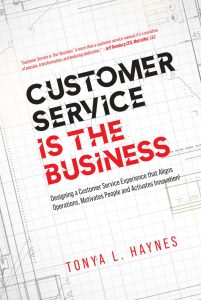Optimizing Customer Touchpoints For A Seamless Firm Experience And Interaction
In the modern business landscape, optimizing customer touchpoints is essential for delivering a seamless and exceptional experience. Read More
Understanding Customer Touchpoints
Customer touchpoints encompass all the interactions a customer has with a brand, from initial contact to post-purchase follow-ups. These interactions can occur through various channels, including in-person visits, websites, social media, customer service calls, and email communications. Each touchpoint contributes to the overall customer experience and influences their perception of the brand.
Mapping the Customer Journey
The first step in optimizing touchpoints is to map out the entire customer journey. This involves identifying each point of interaction a customer has with your firm and understanding how they move from one stage to the next. Mapping the customer journey helps in recognizing pain points, areas for improvement, and opportunities for enhancing the experience.
To effectively map the journey:
- Identify Key Touchpoints: List all possible interactions, including website visits, customer service calls, social media engagement, and product usage.
- Analyze Customer Behavior: Understand how customers navigate through these touchpoints, their preferences, and their pain points.
- Evaluate Experience Quality: Assess the quality and effectiveness of each touchpoint in delivering a positive experience.
Streamlining Communication Channels
A seamless customer experience relies on effective communication across all channels. Ensure that all touchpoints are integrated and that customers receive consistent messaging regardless of how they interact with your firm. Here’s how to streamline communication:
- Unified Messaging: Develop a cohesive brand voice and messaging strategy that is applied across all channels, from your website to social media and email.
- Integrated Platforms: Utilize customer relationship management (CRM) systems to centralize customer information and interactions, allowing for more personalized and consistent communication.
- Cross-Channel Support: Enable customers to switch seamlessly between channels. For example, a customer should be able to start a conversation on social media and continue it via email or phone without having to repeat information.
Enhancing the Digital Experience
In the digital age, optimizing online touchpoints is crucial for delivering a seamless experience. Focus on enhancing your digital platforms to meet customer expectations:
- User-Friendly Website: Ensure your website is intuitive, easy to navigate, and optimized for both desktop and mobile devices. A responsive design improves the user experience and reduces bounce rates.
- Personalized Content: Use data-driven insights to deliver personalized content and recommendations based on customer behavior and preferences.
- Efficient Online Support: Implement live chat features, chatbots, and self-service options to provide timely assistance and resolve issues quickly.
Improving In-Person Interactions
While digital touchpoints are important, in-person interactions remain a key component of the customer experience. Enhance face-to-face interactions by:
- Training Staff: Provide comprehensive training for employees on customer service skills, product knowledge, and handling various customer scenarios.
- Creating a Welcoming Environment: Design physical spaces that are inviting and comfortable, and ensure staff are approachable and attentive.
Soliciting Feedback: Gather feedback from customers about their in-store experience to identify areas for improvement.
Optimizing Customer Service
Customer service is a critical touchpoint that can significantly impact customer satisfaction. To optimize this touchpoint:
- Implement Efficient Processes: Streamline customer service processes to reduce wait times and resolve issues more effectively. Utilize CRM systems to track interactions and provide timely follow-ups.
- Empower Employees: Give customer service representatives the authority and tools they need to address customer concerns promptly and effectively.
- Monitor and Improve: Regularly review customer service interactions and feedback to identify trends and areas for improvement.
Leveraging Customer Feedback
Customer feedback is invaluable for understanding how well your touchpoints are performing. Use feedback to:
- Identify Pain Points: Analyze feedback to pinpoint areas where customers experience difficulties or dissatisfaction.
- Make Data-Driven Decisions: Use feedback to inform decisions about touchpoint improvements and strategic changes.
- Acknowledge and Act: Show customers that their feedback is valued by acknowledging their input and taking action to address their concerns.
Creating a Consistent Experience
Consistency is key to delivering a seamless customer experience. Ensure that all touchpoints provide a uniform experience by:
- Standardizing Procedures: Develop standard operating procedures for each touchpoint to ensure consistency in service and communication.
- Regular Training: Continuously train employees on best practices and updates to maintain a high level of service across all touchpoints.
- Ongoing Evaluation: Regularly evaluate touchpoints to ensure they align with your brand values and customer expectations.
Conclusion
Optimizing customer touchpoints is essential for creating a seamless and positive experience that drives loyalty and satisfaction. By mapping the customer journey, streamlining communication channels, enhancing digital and in-person interactions, improving customer service, leveraging feedback, and ensuring consistency, you can create a cohesive experience that meets and exceeds customer expectations. Embrace these strategies to build lasting relationships with your customers and position your firm for long-term success.






